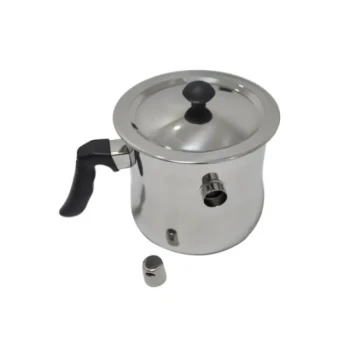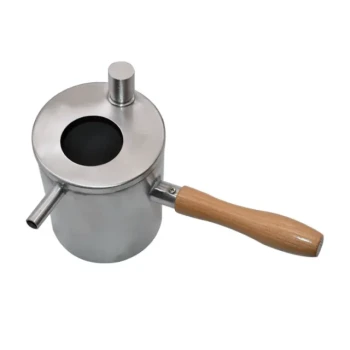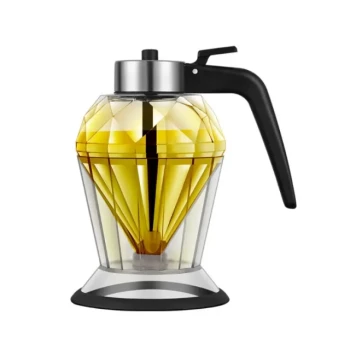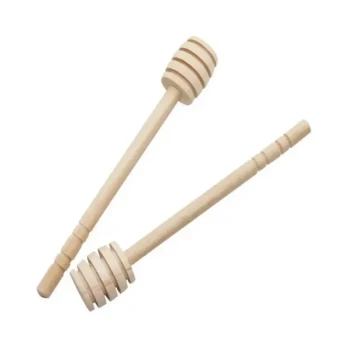To effectively separate wax from honey, you need to heat the mixture to a temperature where the wax melts completely, allowing it to float to the surface. The ideal temperature range for this process is between 160°F and 180°F (approximately 71°C to 82°C). This ensures a full, clean separation without scorching the honey.
The core principle is simple: gently heat the honey just enough to melt the wax, which then separates naturally due to its lower density. The challenge lies in applying this heat without degrading the honey's quality.
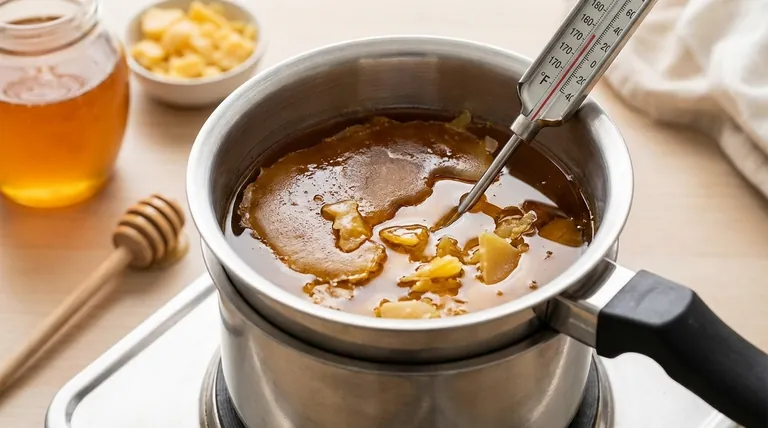
The Science of Separation: Why Temperature Matters
Understanding the properties of both beeswax and honey is key to a successful separation. The goal isn't just to melt the wax, but to do so in a way that preserves the integrity of the honey.
The Melting Point of Beeswax
Beeswax itself has a specific melting point, which is typically between 144°F and 147°F (62°C to 64°C). At this temperature, the solid wax cappings will liquefy.
This is the minimum temperature required to begin the separation process.
Why Use a Higher Temperature?
While wax melts around 145°F, using a slightly higher range of 160°F to 180°F accelerates the process. This higher heat makes both the honey and the wax less viscous, allowing the wax to float to the top much more quickly and completely.
The Principle of Density
The entire method works because of a fundamental difference in density. Liquid beeswax is less dense than honey.
Once the wax is fully melted, it will naturally rise and form a distinct layer on top of the heavier honey, waiting to be removed.
Understanding the Trade-offs: Heat and Honey Quality
Applying heat to honey is a delicate balance. While necessary for separating wax, excessive or prolonged heat can negatively impact the final product.
The Risk of Overheating
Heating honey to very high temperatures can destroy its beneficial enzymes and delicate aromas. This is the primary concern for beekeepers who want to preserve the natural, "raw" qualities of their honey.
Gentle Heating vs. Pasteurization
The gentle warming used for wax separation is different from commercial pasteurization, which often involves heating honey above 170°F for extended periods to kill yeast and prevent crystallization.
Your goal is to use the lowest effective temperature for the shortest possible time.
The Cooling Process is Crucial
After heating, the mixture must be left to cool completely without being disturbed. As it cools, the melted wax will solidify into a hard disk on the surface.
This solid cap can then be easily lifted off, leaving clean honey behind.
Making the Right Choice for Your Goal
The ideal temperature depends on your primary objective. Whether you prioritize speed or the preservation of delicate enzymes will guide your approach.
- If your primary focus is speed and efficiency: Heating to the 160°F - 180°F range will provide a fast, clean separation with excellent results.
- If your primary focus is preserving raw honey qualities: Use the lowest possible temperature that still melts the wax, around 150°F (65°C), and allow more time for the separation to occur.
Ultimately, controlling the temperature is the key to rendering clean wax while protecting the quality of your honey.
Summary Table:
| Key Factor | Ideal Range | Purpose |
|---|---|---|
| Wax Melting Point | 144°F - 147°F (62°C - 64°C) | Minimum temperature to liquefy wax. |
| Optimal Separation Range | 160°F - 180°F (71°C - 82°C) | Ensures fast, complete separation with minimal honey degradation. |
| Gentle Heating (Raw Honey Focus) | ~150°F (65°C) | Preserves delicate enzymes and aromas; requires more time. |
Ready to Scale Your Honey Harvesting?
Mastering temperature control is just one part of efficient beekeeping. HONESTBEE supplies commercial apiaries and beekeeping equipment distributors with the high-quality, durable supplies needed for large-scale operations. From wax melters and honey strainers to protective gear, we help you maximize yield and protect your product's quality.
Contact our wholesale experts today to discuss equipment solutions tailored for your commercial needs.
Visual Guide
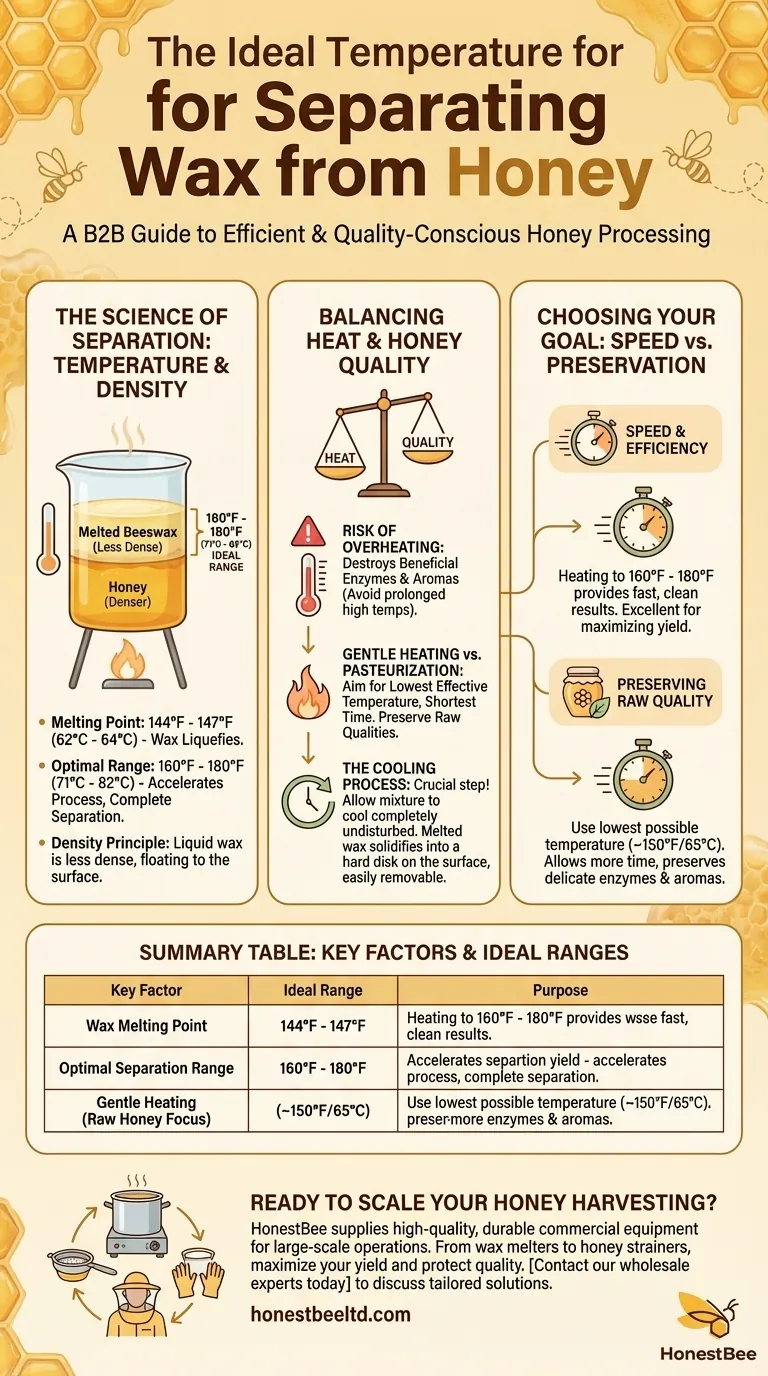
Related Products
- Beeswax Melter for Candle Making Honey Bee Wax Melter
- Professional Stainless Steel Wax Melter for Beekeeping and Crafts
- 8-Frame Electric Self-Reversing Honey Extractor Spinner for Commercial Honey Extraction Equipment
- Honey Wax Separating Wax Press with Metal Screw Wax Separator Machine
- Stainless Steel Manual Honey Press with Guard for Pressing Honey and Wax
People Also Ask
- What are the main types of wax melters? Choose the Right Heating Method for Your Needs
- What is the flashpoint of beeswax? Essential Safety and Quality Tips for Beekeepers
- What do you use a wax melter for? From Home Fragrance to Professional Beekeeping
- How do water jacket melters function? Achieve Gentle, Scorch-Free Melting for Sensitive Materials
- What are the primary products of honey bee farming besides honey? Discover the Hive's Hidden Treasures
